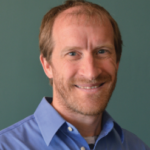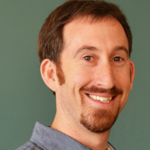Science Talks
There will be several stages at the event:
- Main Stage in the General Admission area
- Stage 2, also in the General Admission area
- One stage in the VIP area
SCIENCE TALKS
PRESENTATION SCHEDULE
Main Stage
- 10:00 am – Dr. Mark Clampin, “How Eclipses Help Us Understand Distant Worlds”
- 10:30 am – Dr. Benjamin Rose, “The Explosive Death of Stars”
- 11:00 am – Dr. Lori Glaze, “The Moon’s Moment in the Sun”
- 11:30 am – Dr. Nick Moskovitz, “Using Eclipses to Defend Earth Against Asteroid Impacts”
- 12:00 pm – Dr. Lucas Paganini, “Chasing Shadows: Unveiling Mysteries from Total Solar Eclipses to Exoplanets”
- 12:30 pm – Dr. Teddy Kareta, “The Discovery of the Solar Wind and the Dawn of the Space Age”
- 1:00 pm – 1:30 pm, Various Speakers
- 1:30 pm – Jeff Hall, “Getting Ready for Totality w/ Jeff Hall (Guided Eclipse Viewing)”
- 1:38 pm – Totality Begins
- 1:42 pm – Totality Ends
- 1:45 pm – 2:15 pm – Various Speakers
- 2:15 pm – Dr. Tyler Richey-Yowell, “How Stars Shape Worlds”
- 2:45 pm – Dr. Kyler Kuehn, “Albert Einstein and the Eclipse of 1919”
- 3:15 pm – Mr. Nick Wagner, “Mars: Dead or Alive?”
Stage 2
- 10:00 am – Dr. Teddy Kareta, “The Discovery of the Solar Wind and the Dawn of the Space Age”
- 10:30 am – Dr. Dominic Benford, “Eclipsing Faraway Suns”
- 11:00 am – Dr. Barbara Endl, “What’s the Fate of our Solar System?”
- 11:30 am – Dr. Sascha Usenko, “Why is the Sky Blue?”
- 12:00 pm – Dr. Tyler Richey-Yowell, “How Stars Shape Worlds”
- 12:30 pm – Dr. Kyler Kuehn, “Albert Einstein and the Eclipse of 1919 (En Español)
- 2:15 pm – Dr. Lorin Matthews, “The Plasma Universe”
- 2:45 pm – Mr. Robby Vukelich, “Light & Materials”
- 3:15 pm – Dr. Barbara Endl
VIP Stage
- 10:00 am – Dr. Barbara Endl, “What’s the Fate of our Solar System?”
- 10:30 am – Dr. Tyler Richey-Yowell, “How Stars Shape Worlds”
- 11:00 am – Dr. Kyler Kuehn, “Albert Einstein and the Eclipse of 1919”
- 11:30 am – Ms. Katie Broad, “Apollo to Artemis: Our Past and Future on the Moon”
- 12:00 pm – Dr. Lorin Matthews, “The Plasma Universe”
- 12:30 pm – Dr. Kartik Sheth, “The Science and Technology of the James Webb Space Telescope”
- 2:15 pm – Dr. Lori Glaze, “The Moon’s Moment in the Sun”
- 2:45 pm – Dr. Nick Moskovitz, “Using Eclipses to Defend Earth Against Asteroid Impacts”
- 3:15 pm – Dr. Teddy Kareta, “The Discovery of the Solar Wind and the Dawn of the Space Age”
Dr. Tyler Richey-Yowell
This total solar eclipse will be one of the few times we can see the Sun’s corona with our own eyes. While the corona appears invisible to us most of the time, it’s actually a big driver of why Earth, Mars, and the other solar system planets have the atmospheres (or lack thereof) that they do. Our Sun isn’t the only star that has a corona, however. Missions such as JWST are actively studying exoplanets as they eclipse their host star to understand how these planets are being shaped by their own star’s corona.
Dr. Tyler Richey-Yowell is a Percival Lowell Postdoctoral Fellow at Lowell Observatory. Her primary research interests are in characterizing the early evolution of stars smaller than our Sun, interpreting what this means in our understanding of how these types of stars work, and determining how their evolution impacts the planets orbiting them. Dr. Richey-Yowell uses both ground- and space-based instruments primarily in the UV, optical, and infrared to study these types of relationships between stars and exoplanets.
Dr. Teddy Kareta
Dr. Theodore (Teddy) Kareta will talk about the history of our knowledge of the solar wind — a continuous stream of charged particles emanating from the Sun’s uppermost atmosphere — from early evidence around the turn of the 20th century from observations of comets through its confirmation by one of the earliest satellites at the dawn of the Space Age.
Dr. Teddy Kareta is a planetary astronomer and postdoctoral researcher at Lowell Observatory. He received his bachelor’s degrees from the University of Massachusetts Amherst and his doctorate from the University of Arizona. His primary interests lie in the small bodies of the Solar System — the comets, asteroids, and trans-Neptunian objects — and how they have evolved since their formation four and a half billion years ago. He has also had key roles on two NASA spacecraft missions, OSIRIS-REx and DART, and led efforts to characterize the first interstellar comet, 2I/Borisov starting just days after its discovery.
Dr. Kyler Kuehn
While eclipses can be enjoyed by anyone, whether they have a telescope or not, scientists can learn even more about the sun — and the rest of our universe — by using advanced technologies for observations during an eclipse. I will talk about the techniques and equipment used by scientists in 1919 to spectacularly confirm the theory of relativity proposed only four years previously by Albert Einstein. I will also share how advancements on that technological heritage in the century since — including ways that scientists can create their own eclipses (for individual telescopes) — are allowing scientists to learn even more today.
Dr. Kyler Kuehn is the Director of Technology at Lowell Observatory, where he leads the team responsible for the construction, maintenance, and operation of astronomical facilities and instruments. His research focuses on the application of photonic technologies to novel astronomical instrumentation. Prior to his tenure at Lowell, he was an Instrument Scientist and Project Manager at the Australian Astronomical Observatory. He also served as a Postdoctoral Researcher at Argonne National Laboratory and The Ohio State University. He received his PhD in Particle Astrophysics from the University of California, Irvine.
Dr. Nick Moskovitz
NASA’s DART mission was the world’s first full-scale planetary defense experiment. DART intentionally impacted the moon of an asteroid called Didymos to see how much an asteroid could be deflected with a spacecraft. The success of this mission relied on measuring eclipses of Didymos by its moon. These eclipses were used to show that with enough lead time a spacecraft like DART could prevent an asteroid from impacting the Earth.
Dr. Nick Moskovitz is a planetary astronomer at Lowell Observatory. He has degrees from the University of California at Santa Barbara and the University of Hawaii. His research focuses on asteroids, comets, and meteors. This work aims to improve our understanding of how the Solar System formed and of the impact hazard that these bodies may pose to Earth. His work has supported a number of spacecraft missions including NASA’s DART mission, the Japanese Hayabusa2 mission, and efforts related to asteroid mining.
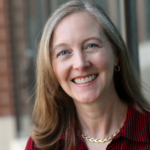 Dr. Lorin Swint Matthews
Dr. Lorin Swint Matthews
“The Plasma Universe”
99.99% of the matter in the universe is in the plasma state. Plasma, the material that forms our sun and lighting bolts, flows through our solar system and fills the space between stars. Dr. Matthews will explain some of the fascinating science behind plasma phenomena observed in astrophysical environments and how we harness the power of plasma here on earth.
Dr. Lorin Swint Matthews is a Professor and Chair of the Department of Physics at Baylor University where she is the Associate Director of the Center for Astrophysics, Space Physics, and Engineering Research. She was employed at a multi-disciplined engineer at Raytheon Aircraft Integration Systems from 1998-2000 where she worked on NASA’s SOFIA (Stratospheric Observatory for Infrared Astronomy) aircraft. Dr. Matthews studies the charging and dynamics of dust in astrophysical and laboratory plasma environments, which has applications ranging from the formation of planets to fusion energy. She received her Ph.D. in Physics from Baylor University and is a Fellow of the American Physical Society.
- Media availability – 20 minutes after each scheduled talk
 Dr. Barbara Castanheira Endl
Dr. Barbara Castanheira Endl
“What’s the fate of our Solar System?”
Stellar evolution might take a very long time to take place, but when stars change, they greatly impact planets and neighboring stars. Our Sun is about 4.5 billion years old and in about 4.5 billion years, it will evolve into a red giant, when its size will extend almost to the orbits of the terrestrial planets. After the ejection of the planetary nebula, the Sun will become a white dwarf star. In this talk, I will review the latest results of planet searches around white dwarf stars to probe the fate of our own solar system.
Dr. Barbara Castanheira Endl is an Assistant Professor in the Department of Physics at Baylor University. She was born and raised in Brazil, earning her B.S., M.Sc. and Ph.D. at Universidade Federal do Rio Grande do Sul, in Porto Alegre-RS, Brazil. She earned a prized fellowship during her Ph.D. studies at the University of Texas at Austin, where she keeps a research affiliation. Her main research interest is in stellar evolution, more especially in the study of white dwarf stars.
Availability: All Day
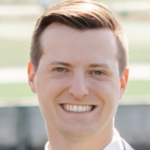 Robert Vukelich
Robert Vukelich
“Light and Materials”
Light is a crucial tool that can be used to better understand everything around us, from interstellar objects light years away to the movement of particles on a scale a million times smaller than an atom. An understanding of how light moves and what light is allows us to use it for scientific purposes. In particular, I will talk about how we use light in Dr. Hilton’s lab at Baylor University to study the movement of electrons within materials.
Robert Vukelich is a Ph.D candidate in the Department of Physics at Baylor University. He received his Bachelor of Science in Civil Engineering at Minnesota State University, Mankato and his Master of Arts in Physics at Baylor University. His research focuses on ultrafast spectroscopy of quantum materials in extreme environments.
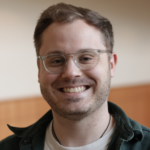 Nick Wagner
Nick Wagner
“Mars: Dead or Alive?”
Mars has traditionally been thought of as a geologically dead world. However, recent missions to Mars have shown us that most marsquakes originate from a tectonically active region, called Cerberus Fossae. It’s likely there is a mantle plume underneath this area causing the marsquakes. In this talk, I will discuss our current knowledge of how active the seemingly dead red planet might be. I will compare and contrast evidence for how active Mars once was in its past and discuss advances in our understanding of the current state of Mars from famous satellites, landers, and rovers from the past two decades.
Nick Wagner is a Planetary Geophysicist who studies the interior of Mars. He uses gravity data to study the compositional and structural state of Mars and more recently has used gravity and tidal data to study Titan, one of Saturn’s moons. He is a Ph.D. student in the planetary research group at Baylor University. Nick has a broad background in exploration geophysics, geodynamics, and geodesy. He is originally from Georgia and completed his bachelor’s degree in Geophysics from the Colorado School of Mines before joining Baylor in 2019. In his free time Nick likes to hike, camp, ski, rock climb, and hang out with his dog Milo.
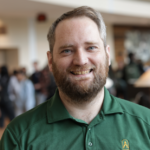 Dr. Benjamin Rose
Dr. Benjamin Rose
“The Explosive Deaths of Stars”
Our Sun will not last forever. Every star stops making energy and succumbs to gravity’s relentless pull. However, the most massive stars don’t give up without an explosive fight. Dr. Benjamin Rose will talk about what causes these explosions and how we can use them to understand both stars and even measure the size of the Universe.
Dr. Benjamin Rose is an Assistant Professor at Baylor University. He has degrees from Whitworth University and the University of Notre Dame. His research focuses on using exploding stars, Type Ia Supernovae, to measure distances and understanding the dynamics of our Universe. His work uses many telescope facilities, however, he focuses on preparations for NASA’s next flagship mission, the Nancy Grace Roman Space Telescope.
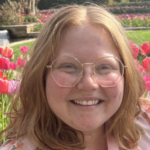 Dr. Katie Broad
Dr. Katie Broad
“Apollo to Artemis: Our Past and Future on the Moon”
NASA’s Apollo missions (1967-1972) consisted of six different Moon landings. During these missions, several groundbreaking experiments were conducted on the Moon’s surface that continue to guide scientists as they study other planets like Mars, Venus, Mercury and even planets outside of our solar system! Unfortunately, no human has set foot on the Moon since – until now! NASA’s Artemis missions began with Artemis I in 2022, and the current timeline of Artemis III is going to put humans back on the Moon this year (2024) for the first time in over 50 years!
Katie Broad is currently a PhD candidate in planetary geophysics in the Baylor Geosciences department. She got her undergraduate degree in physics and planetary science at Purdue University. Her research is focused on meteorite impacts and the craters they leave behind. Right now, she’s using gravity measurements from the most recent American moon landing, Apollo 17, to figure out what’s beneath the surface of these craters and what they can tell us about how planets change over time. Katie’s current studies will be directly applicable to NASA’s upcoming Artemis missions that will put humans back on the surface of the Moon for the first time in over 50 years.
 Dr. Sascha Usenko
Dr. Sascha Usenko
“Why is the Sky Blue?”
Our planet’s blue sky has long captivated our scientific curiosity. During the Eclipse Over Texas, we will delve into the fascinating scientific phenomena behind our beautiful blue canopy and explore a few of the changes that will occur during totality. As we gaze up at the sky, we will explore the mechanism of scattering that produces the stunning shades of blue. Finally, we will shed light on connection between light and chemistry and the impact of the eclipse on our atmosphere including composition, solar radiation and temperature.
Dr. Sascha Usenko is a Professor of Environmental Science at Baylor University. He received his Ph.D. from Oregon State University in 2007. His research interests include atmospheric chemistry with a particular focus on the fate and transport of volatile organic compounds and aerosols.
Usenko is particularly interested in intricate complexities associated with atmospheric processing and its impacts on air quality from both anthropogenic and biogenic sources. The Usenko Group develops and utilizes mobile and portable air quality laboratories to conduct neighborhood to regional-scale air quality research. These sampling platforms are outfitted with a wide range on instrumentation including cavity-ring down and mass spectrometry.
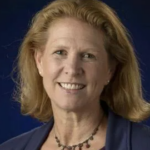 Dr. Lori S. Glaze
Dr. Lori S. Glaze
Dr. Lori Glaze is the Director of NASA’s Science Mission Directorate’s Planetary Science Division. Planetary Science is focused on space flight missions and scientific research that address fundamental questions of solar system formation and evolution, including understanding planetary environments that can (or could have in the past) support life.
Her research interests include physical processes in terrestrial and planetary volcanology, atmospheric transport and diffusion processes, and geologic mass movements. Her work focuses on data analysis and theoretical modeling of surface processes on all the terrestrial solar system bodies, particularly the Earth, Venus, Mars, the Moon, and Io.
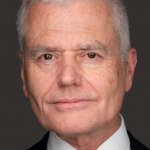 Dr. Mark Clampin
Dr. Mark Clampin
Dr. Mark Clampin is the Astrophysics Division Director in the Science Mission Directorate at NASA Headquarters in Washington, DC. The goals of the Astrophysics Division are to understand how the universe works, understand how we got here and to address the question, are we alone?
Until August 2022, Dr. Clampin was the Director of the Sciences and Exploration Directorate (SED) at the Goddard Space Flight Center (GSFC) where he led the Astrophysics, Solar System, Heliophysics and Earth Science Divisions, together with the high performance computing office. At GSFC, he previously served as the James Webb Space Telescope (JWST) Observatory Project Scientist, and subsequently as Director of the Astrophysics Science Division and Deputy Director of SED.
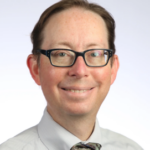 Dr. Dominic Benford
Dr. Dominic Benford
As the Program Scientist for the Nancy Grace Roman Space Telescope, Dominic’s job is to make Petabytes of stunning images of the universe available to you, the scientifically curious, and to provide the tools for astronomers to make groundbreaking discoveries with them. Roman will address two of the biggest questions in astronomy: how did the universe grow to be like it is now, and are there planetary systems like our own around other stars? But today, his subject is “Eclipsing Faraway Suns” – because Roman, and its successor the Habitable Worlds Observatory, will carry a revolutionary instrument that blocks the light from a star and lets astronomers see the reflected light of the planets orbiting it!
 Dr. Lucas Paganini (Esta presentación será en español) Persiguiendo sombras: revelando misterios desde eclipses solares totales hasta exoplanetas. Uno de nuestros principales objetivos es estudiar el Universo en luz visible e infrarroja para revelar una de las preguntas más antiguas de nuestra humanidad: ¿Estamos solos en el universo? Esta charla exploraremos cómo las técnicas utilizadas para estudiar el Sol se pueden aplicar para descubrir los misterios de otros mundos, centrándose en el recientemente lanzado telescopio espacial James Webb y la próxima generación, el telescopio Nancy Grace Roman que se lanzará en 2027.
Dr. Lucas Paganini (Esta presentación será en español) Persiguiendo sombras: revelando misterios desde eclipses solares totales hasta exoplanetas. Uno de nuestros principales objetivos es estudiar el Universo en luz visible e infrarroja para revelar una de las preguntas más antiguas de nuestra humanidad: ¿Estamos solos en el universo? Esta charla exploraremos cómo las técnicas utilizadas para estudiar el Sol se pueden aplicar para descubrir los misterios de otros mundos, centrándose en el recientemente lanzado telescopio espacial James Webb y la próxima generación, el telescopio Nancy Grace Roman que se lanzará en 2027.
Dr. Lucas Paganini began his career as an engineer, and his interest in astronomy led him to become a NASA planetary scientist. Today, Lucas is a Program Executive in the Astrophysics Division at NASA Headquarters, serving on the Nancy Grace Roman Space Telescope Mission and the Exoplanet Exploration Program, where he oversees and guides the teamwork of engineers and scientists developing upcoming space missions in search of life on other planets and knowledge of the universe. (En Español)
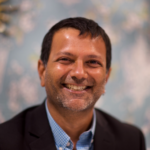 Dr. Kartik Sheth
Dr. Kartik Sheth
Dr. Kartik Sheth is a world-renowned observational astrophysicist whose scientific research has primarily been in the areas of galaxy formation and evolution, star formation and the interstellar medium. His somewhat non-traditional career path has taken him across government, academia, nonprofits, and impactful roles within the White House, serving as the Assistant Director for Research Infrastructures and Science Equity in the Office of Science and Technology Policy, and as the Program Examiner for the Department of Energy, Office of Science in the Office of Management and Budget. He recently returned to NASA where he currently serves as the Associate Chief Scientist for the Agency.



